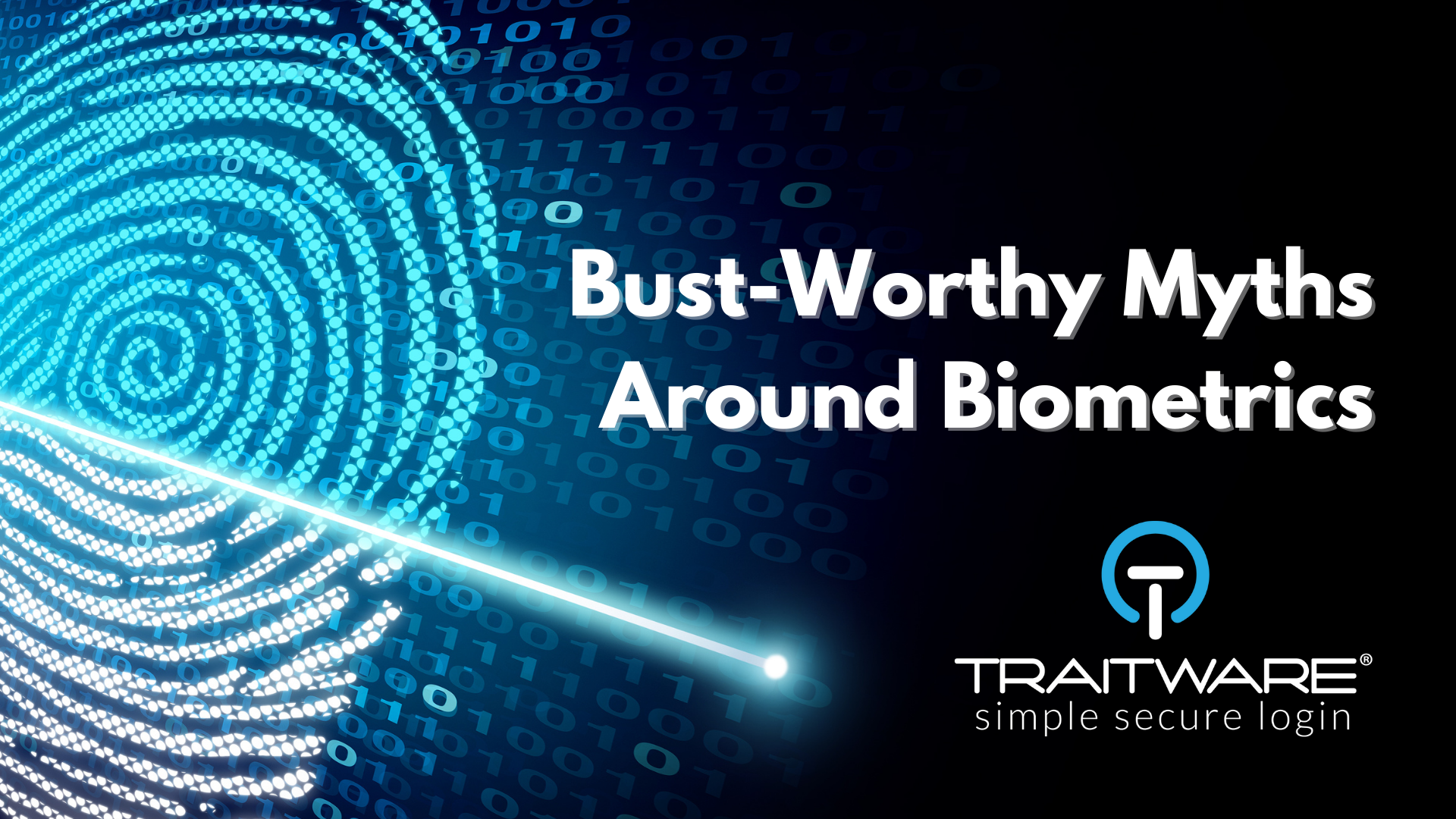FOR IDENTITY & ACCESS MANAGEMENT
With cybercrime in today’s headlines almost daily, companies are looking to modernize security protocols. Biometrics are being widely adopted for greater security and for improved user experience. Yet some are still hesitant to make the shift.
Here are a few myths about biometrics that need busting:
1. Biometric images can be accessed by cybercriminals.
The image taken from a biometric is NOT what is used in the authentication process. The original image is replaced by a mathematical representation or template, and combined with other factors for more secure authentication.
2. Biometrics are easy to replicate
When “liveness detection” is implemented, algorithms can distinguish between fake and “real”. TraitWare’s patented process authenticates the identity of a user and certain “digital traits” on their smartphone or tablet device, creating a secure, authenticated access token. There are two types of liveness detection: Active and Passive. Passive liveness detection is faster, less “intrusive” and includes more advanced techniques for verifying that a human is present.
3. Biometric data is unreliable
Evidence shows that biometric authentication is far superior to “legacy” login (using a username and password). 81% percent of security breaches can be traced back to a compromised password. Fingerprinting, just for example, has an accuracy of more than 99 percent.
4. Biometric authentication is less trustworthy than credential-based login.
Once again, most data breaches are due to password theft. Knowledge factors – whether it’s a PIN, a one-time passcode, the name of your pet, or a username and password – can be guessed, shared, or leaked. It even be up for sale on the dark web. Biometrics tie the login to a live human.
5. Biometrics go against privacy regulations
For biometric authentication to work when using TraitWare, a user needs to opt-in using the biometric reader on a device. This is different from facial recognition technology, for example, where the user is being monitored without consent. Moreover, with biometric authentication, there is no photo stored by any third party. Instead, a mathematical representation is created that is of no use to a hacker. NOTHING is stored by TraitWare. The USER is in possession of the information via his/her device – at all times.
6. Biometrics are expensive
Modern technology like TraitWare’s, leveraging the biometric reader in a smart device, means very little initial investment. And, with no additional hardware, onboarding fees, or password reset costs, companies will be saving money in the long run.
7. Biometric authentication is more time-consuming than other forms of authentication
Not even close. TraitWare’s biometric-enabled multi-factor authentication will log you in in 3 touches. With TraitWare, you can use up to 5-factors for authentication and the MFA is inherent in the solution from account creation, which means a frictionless user experience. No more passwords to remember, no expensive physical key to buy (or lose), and no one-time passcodes to have pushed to another device. Simply go to the login page, confirm your identity via the TraitWare app, scan the one-time QR code on your screen, and you’re in.
For more information about how TraitWare uses biometrics to help simplify and secure login, please contact us any time. If you have 15 minutes, we’ll gladly personally take you through a demo of our product.
